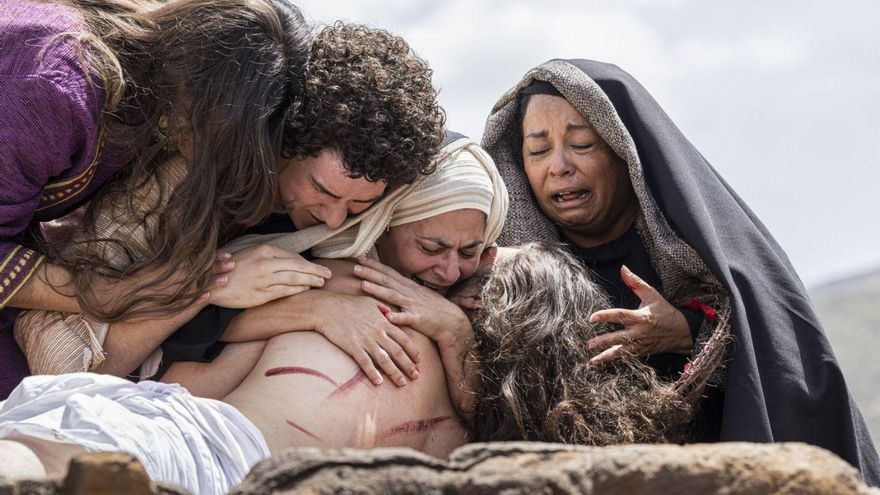
More than 200,000 people followed the Passion of Adeje on Friday on Calle Grande de Adeje and through television and the internetone of the most spectacular acts of Holy Week in Tenerife. The representation, which this year celebrated its twenty-sixth edition, returned with force thanks to the new scenes and characters. The City Council assures in a statement that “all audience expectations were exceeded” after being broadcast nationally by 13 Television, regionally by Televisión Canaria and Mírame Televisión, only for Tenerife did Channel 4 television, Channel 10 TV, as well as the municipal radio station Radio Sur Adeje 107.9 FM and the social networks of the Adejero City Council itself.
On Friday, around 300 amateur actors and actresses and some professionals participated, in addition to the technical and logistical staff that contribute to this performance taking place year after year. La Pasión is one of the most unique and identifying cultural gatherings in the municipality, as well as being one of the events in which the most people participate and one of the most technically complex. The Passion has become a sign of identity and peaceful coexistence among the adejeras and adejeras.
This unique play is organized by the Adeje City Council in a job that involves numerous departments, all of them under the supervision of the mayor of the municipality, José Miguel Rodríguez Fraga. The direction of the representation of The Passion was in charge of Abraham Gómez; the coordination and production, by Alberto Álvarez; and the artistic direction was the work of Freya Jaén. The municipal personnel, as well as those responsible for props, scenery, costumes, hairdressing and makeup, were key to making La Pasión shine in this edition, who were joined by cameras, photographers and the municipal communication team.
The start-up of this great theatrical work lasting almost two hours took place on Calle Grande and Spain Square from Adeje. The Passion began with the messianic entrance of Jesus, which is known as Palm Sunday, where the dialogue “Let the children come to me because theirs will be the kingdom of God” takes place. This year, the most significant novelty was the incorporation of a new scene, the expulsion of the merchants from the temple, which took place after the messianic entrance. In this scene a different Jesus was observed, more intense and concerned about his own purity of faith and the phrase “my house will be called a house of prayer” could be heard, which is why Jesus Christ expelled the merchants from the temple, because in his judgment of the messiah, with their purchases and sales, they dishonored the Father exactly in the place where he should be most honored.
Next, the last supper took place, where Jesus warned his apostles that they should respect one another in the same way that he had loved them. The bread and wine symbolize eternal life, the body and blood of Jesus Christ that was offered to his disciples at the Last Supper.
The scenes that represent the last moments of the life of Jesus followed one another. Among the most significant are the trial of Pontius Pilate, Herod, the meeting with Judas, the prayer in the Huerto de Los Olivos, the meeting with the mother until the completion of the work, in Plaza España where two crosses before an exceptional setting with the ravine of Hell as a backdrop.
The crucifixion scene, the most significant of the entire representation, began with the tortuous journey of Jesus Christ, who, under the lashes of the Romans, bids farewell to his mother for the last time. Carrying the cross, Jesus, played by the actor Ignacio de La Lastra, came to an end. At this point, he was accompanied by the Virgin Mary, who was played by Ana Oneida Borges Medina, along with María de Cleofás, played by Sonnibel Mendoza, Saint John was represented by Gabriele Zizzi and María Magdalena, whose role was played by Ania gonzalezwho also sang live and put an end to this shocking work of theater.
On Calle Grande de Adeje alone, more than 5,000 people gathered on Friday to experience a new edition of the Passion of Adeje, one of the main events of Holy Week in Tenerife.
















